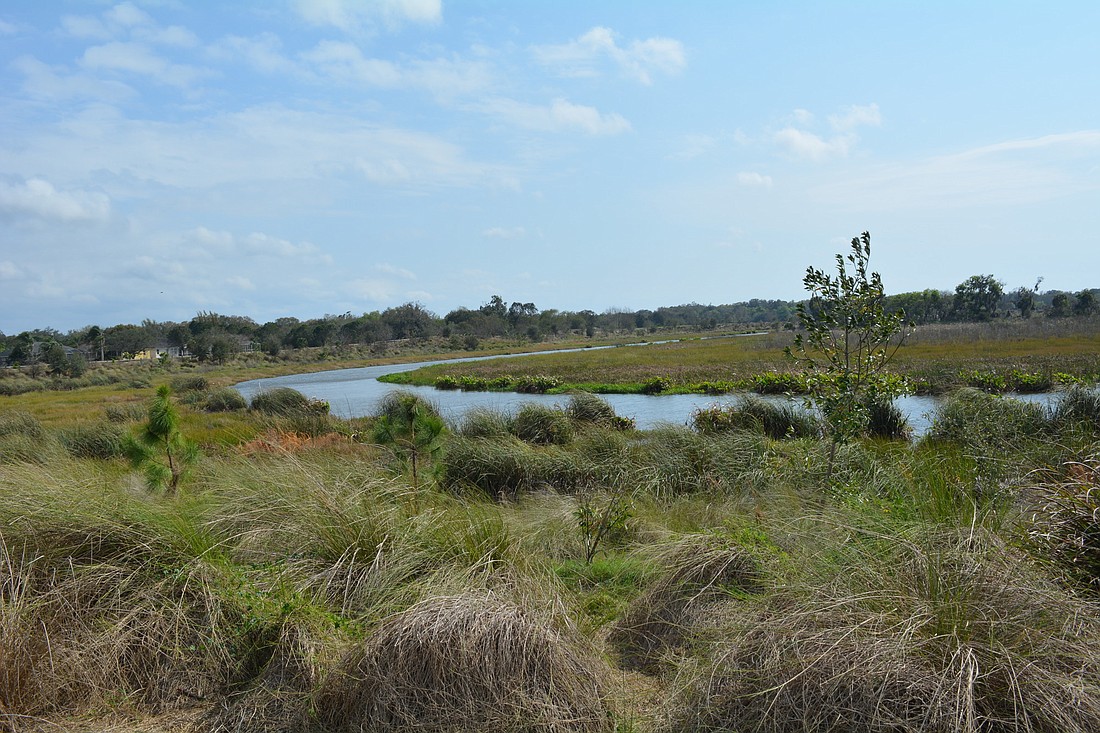- April 14, 2025
-
-
Loading

Loading

Although the developer of a recycling facility and waste transfer station just west of the Celery Fields in eastern Sarasota County said the project will benefit the environment, residents along Palmer Boulevard disagree.
A group of residents that has formed to fight the project said the proposed plan is incompatible with nearby residences, will add truck traffic and pollution, will create noise loud enough to disturb neighboring birds at the Celery Fields and will hurt neighboring home values.
James Gabbert, owner of TST Ventures, said the recycling plant will reuse thousands of tons of material to help the environment. Gabbert's plant would sit on a 16.2-acre lot near the Celery Fields, a park that covers more than 300 acres. The Celery Fields doubles as Sarasota County's primary stormwater collection zone along with being a public park and birding oasis.
The 16.2-acre lot is at the southeast corner of Apex Road and Palmer Boulevard and abuts what Sarasota County calls a major employment center.
“A mile down the road there are 600 more homes going in at the corner of Iona and Palmer,” said Peter Gemma, who lives in The Enclave development farther east. “It’s a safety issue.”
Gabbert said the recycling proposal is a natural extension of already approved plans for the waste transfer station, will be safe and will have minimal impact on neighbors. Plus, he said it’s allowed according to Sarasota County’s future land-use maps.
Opposition to the recycling facility and waste transfer station has been growing. An online petition against the project has more than 4,000 signatures, of which nearly 1,500 people left comments. The comment themes are common, with preservation of the Celery Fields and its world-renowned bird watching at center stage. Resident David Johnson created a Celery Fields advocacy website, celeryfields.org, on Feb. 16 to help raise awareness of the application, as well.
Gemma and Matt Casella believe the project is too close to residences and is especially too close to the Celery Fields. Concrete crushing, which will be done at the recycling facility, is loud and could cause harm to a now-established bird estuary, they say.
Sarasota County approved Gabbert’s plans for the waste transfer station at 6150 Palmer Blvd. in October 2015, and the facility already is under construction. When Sarasota County deemed the neighboring acreage surplus and put the property up for sale last year, he placed a bid and was selected for negotiations.
The properties combined give him the 15-acre minimum needed for a recycling facility. His application to rezone the property to light industrial manufacturing and warehousing, a use allowed under the major employment center category, is working through the county review process. A public hearing, likely this summer, is the final step of negotiations and would finalize his purchase of the property, if approved by Sarasota County commissioners.
Gabbert recognizes neighbors are concerned, but said misinformation is spreading and the project is within the county’s designated industrial area. He agrees the Celery Fields is a “pristine” park, but doesn’t believe his project will bring the doom-and-gloom opponents suggest.
“It’s an urban park. It’s bisected by a roadway,” Gabbert said, noting there are two helicopter landing areas and both commercial and industrial uses nearby. “None of this affects the nature of the park. I would not be proposing something that would degrade the Celery Fields. I’m not trying to degrade the neighborhood.”
Gabbert’s proposal includes more landscaping and buffering than required by the county in an industrially zoned area. Piles for materials could be as high as 35 feet, and would be set back at least 50 feet from the property line and behind a solid fence.
Having owned and operated such facilities previously, Gabbert doesn’t believe it will impact birds at the Celery Fields because of noise or any other issues. There’s even a small parcel remaining between his property and the park itself.
Gabbert is passionate about recycling and opportunities to keep waste out of the landfills whenever possible and thinks the location is appropriate for what he is proposing.
If the contract goes through, his investment into the property, once the facility is constructed, will be about $6 million, including the $1.8 million for the 11-acre parcel he’s buying from Sarasota County.
Johnson said with the increased residential development near the Celery Fields, the county should revisit its future land-use maps and make changes.
“We need to try to solve the problem,” Johnson said. “I do not think industrial development within a certain area around the Celery Fields, for all the reasons people cited — birding, park activities, etc. — is appropriate.”